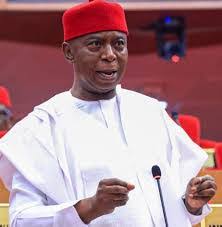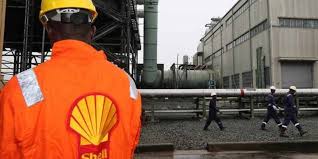Oil & Energy
‘Nigeria’s April Production Below Budget Benchmark’
Notwithstanding its increased production output of 1.95 million barrels daily (mbd) for April, according to the latest S&P Global Platts survey, Nigeria’s output remains below the 2019 budget benchmark of 2.3mbpd at $60 per barrel.
Although OPEC and 10 non-OPEC partners had in December, agreed on a new supply accord, which runs from January-June, which exempts Iran, Libya, and Venezuela, Nigeria’s output has been on the rise since the beginning of the year.
Nigeria’s quota under the deal is 1.69mbd, though it disputes the inclusions by Platts and other market watchers of some grades that it considers to be condensate.
Nigeria boosted its April production to a 14-month high of 1.95mbd despite delays to loadings of key export grade, Qua Iboe, according to traders, and disruptions to a major Bonny Light pipeline, the survey found.
After four months of decline, tightening the oil market considerably, OPEC’s collective crude oil production in April held relatively steady from March, rising just 30,000 b/d to 30.26mbd, an S&P Global Platts survey has shown.
However, individual output levels among the 14 OPEC members varied month-on-month, with Iran’s sanctions-induced slump, and Angola’s drop offset by significant rises in Nigeria and Iraq, and recoveries in crisis-torn Libya and Venezuela, the survey found.
Among the 11 OPEC members with output quotas, compliance in April was 116 per cent, according to Platts calculations, largely due to Saudi discipline, this giving the coalition some cushion to increase production and still remain within the parameters of the deal.
Saudi Arabia, the organisation’s largest producer by far, held its April output at 9.82mbd, the lowest in over four years, and well below its quota under an OPEC/non-OPEC accord, according to the survey, as it continues to demonstrate considerable restraint in hopes of bolstering oil prices.
But with the U.S this month, tightening its sanctions on crude exports from Iran by allowing waivers to eight countries to expire, all eyes will be on Saudi Arabia and how it manages its production going forward.
The kingdom, which says it has a total production capacity of 12.5 million b/d, faces immense pressure from the U.S. to keep the oil market well-supplied in the event of a squeeze due to sanctions, but must weigh its own internal budgetary aims, as well as OPEC unity.
Geopolitical rival Iran, whose production has fallen to below U.S. sanctions between January 2012 and January 2016, and denounced in advance any move by other members to claim its market share.
Iran pumped 2.57mbd in April, a 120,000 b/d drop from March, and the lowest since December 1988, the Platts survey found, as many buyers began to shy away in anticipation of the U.S. decision on the sanctions waivers.
Many analysts expect an even heftier fall in Iranian crude production going forward, as the U.S. cracks down on sanctions enforcement.
Saudi Arabia is set to host a meeting of the nine-country OPEC/non-OPEC market monitoring committee that it co-chairs with Russia on May 19, in Jeddah, where comments from oil ministers are sure to be monitored closely.
Libya, which does not have a quota, produced 1.10mbd in April, the highest since June 2013, as it benefited from the ramp-up of its Sharara field, which is prone to security according to the survey.
Meanwhile, Venezuela, which is also exempt from the deal, saw some recovery from power outages that had crippled the country in March to pump 780,000 b/d, though many oil facilities are still impaired and production remains well below its peak.
In Angola, declines at mature fields brought production down to 1.41mbd in April – the lowest level since it joined OPEC in 2007 – even with the new Kaombo field coming online.
Oil & Energy
Nigeria Loses More Crude Oil Than Some OPEC Members – Nwoko

Nigeria’s losses due to crude oil theft has been said to be more significant than those of some other members of the Organisation of Petroleum Exporting Countries(OPEC).
The Chairman, Senate Ad- hoc Committee on Crude Oil Theft, Senator Ned Nwoko, made this known in an interview with newsmen in Abuja.
Nwoko noted with dismay the detrimental impact of the issue, which, he said include economic damage, environmental destruction, and its impact on host communities.
According to him, the theft was not only weakening the Naira, but also depriving the nation of vital revenue needed for infrastructure, healthcare, education and social development.
The Senator representing Delta North Senatorial District described the scale of the theft as staggering, with reports indicating losses of over 200,000 barrels per day.
Nwoko disclosed that the ad hoc committee on Crude Oil Theft, which he chairs, recently had a two-day public hearing on the rampant theft of crude oil through illegal bunkering, pipeline vandalism, and the systemic gaps in the regulation and surveillance of the nation’s petroleum resources.
According to him, the public hearing was a pivotal step in addressing one of the most pressing challenges facing the nation.
‘’Nigeria loses billions of dollars annually to crude oil theft. This is severely undermining our economy, weakening the Naira and depriving the nation of vital revenue needed for infrastructure, healthcare, education, and social development.
‘’The scale of this theft is staggering, with reports indicating losses of over 200,000 barrels per day more than some OPEC member nations produce.
‘’This criminal enterprise fuels corruption, funds illegal activities and devastates our environment through spills and pollution.
‘’The public hearing was not just another talk shop; it was a decisive platform to uncover the root causes of crude oil theft, bunkering and pipeline vandalism.
‘’It was a platform to evaluate the effectiveness of existing surveillance, monitoring, and enforcement mechanisms; Identify regulatory and legislative gaps that enable these crimes to thrive.
‘’It was also to engage stakeholders, security agencies, host communities, oil companies, regulators, and experts to proffer actionable solutions; and strengthen legal frameworks to ensure stricter penalties and more efficient prosecution of offenders”, he said.
Nwoko noted that Nigeria’s survival depended
Oil & Energy
Tap Into Offshore Oil, Gas Opportunities, SNEPCO Urges Companies

Shell Nigeria Exploration and Production Company Ltd. (SNEPCo) has called on Nigerian companies to position themselves strategically to take full advantage of the growing opportunities in upcoming offshore and shallow water oil and gas projects.
The Managing Director, SNEPCO, Ronald Adams, made the call at the 5th Nigerian Oil and Gas Opportunity Fair (NOGOF) Conference, held in Yenagoa, Bayelsa State, last Thursday.
Adams highlighted the major projects, including Bonga Southwest Aparo, Bonga North, and the Bonga Main Life Extension, as key areas where Nigerian businesses can grow their capacity and increase their involvement.
“Shell Nigeria Exploration and Production Company Ltd. (SNEPCo) says Nigerian companies have a lot to benefit if they are prepared to take advantage of more opportunities in its offshore and shallow water oil and gas projects.
“Projects such as Bonga Southwest Aparo, Bonga North and Bonga Main Life Extension could grow Nigerian businesses and improve their expertise if they applied themselves seriously to executing higher value contracts”, Adams stated.
Adams noted that SNEPCo pioneered Nigeria’s deepwater oil exploration with the Bonga development and has since played a key role in growing local industry capacity.
He emphasized that Nigerian businesses could expand in key areas like logistics, drilling, and the construction of vital equipment such as subsea systems, mooring units, and gas processing facilities.
The SNEPCO boss explained that since production began at the Bonga field in 2005, SNEPCo has worked closely with Nigerian contractors to build systems and develop a skilled workforce capable of delivering projects safely, on time, and within budget both in Nigeria and across West Africa.
According to him, this long-term support has enabled local firms to take on key roles in managing the Bonga Floating, Production, Storage and Offloading (FPSO) vessel, which reached a major milestone by producing its one-billion barrel of oil on February 3, 2023.
Oil & Energy
Administrator Assures Community Of Improved Power Supply

The Emohua Local Government Area Administrator, Franklin Ajinwo, has pledged to improve electricity distribution in Oduoha Ogbakiri and its environs.
Ajinwo made the pledge recently while playing host in a courtesy visit to the Oduoha Ogbakiri Wezina Council of Chiefs, in his office in Rumuakunde.
He stated that arrangements are underway to enhance available power, reduce frequent outages, and promote steady electricity supply.
The move, he said, was aimed at boosting small and medium-scale businesses in the area.
“The essence of power is not just to have light at night. It’s for those who can use it to enhance their businesses”, he said.
The Administrator, who commended the peaceful nature of Ogbakiri people, urged the Chiefs to continue in promoting peace and stability, saying “meaningful development can only thrive in a peaceful environment”.
He also charged the Chiefs to protect existing infrastructure while promising to address the challenges faced by the community.
Earlier, the Oduoha Ogbakiri Wezina Council of Chiefs, led by HRH Eze Goodluck Mekwa Eleni Ekenta XV, expressed gratitude to the Administrator over his appointment and pledged their support to his administration.
The chiefs highlighted challenges facing the community to include incessant power outage, need for new transformers, and the completion of Community Secondary School, Oduoha.
The visit underscored the community’s expectations from the LGA administration.
With Ajinwo’s assurance of enhancing electricity distribution and promoting development, the people of Oduoha Ogbakiri said they look forward to a brighter future.
By: King Onunwor
-
Politics2 days ago
Bayelsa APC Hails Late Buhari As Change Agent In Nigerian Politics
-

 News2 days ago
News2 days agoShettima, Atiku, Obi Attend Buhari’s Fidau Prayer In Daura
-

 News2 days ago
News2 days agoJAMB Uncovers 9,469 Fake Admissions In 20 Tertiary Institutions
-

 News2 days ago
News2 days agoNAF Disowns Recruitment Adverts, Says It’s Fake
-
Nation2 days ago
Alumni, Others Launch Campus Care Initiative In Port Harcourt
-
News2 days ago
Rivers Chief Judge Frees 21 Awaiting Trial Inmates
-
Politics2 days ago
Natasha’s Counsel Writes Senate Over Court Judgment
-
Nation2 days ago
NIPR Practitioners Urge To Go Beyond Traditional Media Relations To Strategic Leadership Functions

